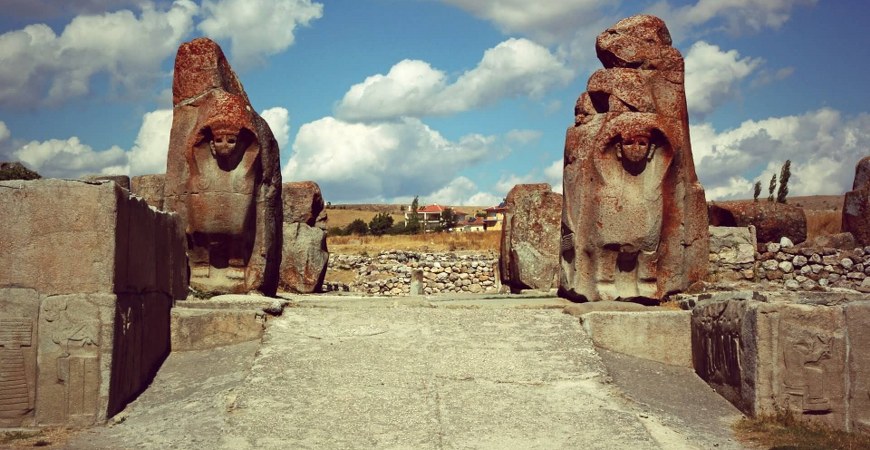Alacahoyuk Treasures Hattusa – Chapter 1,
On May 6, 1933, this news was reported in the newspapers : “Yesterday morning His Excellency Gazi Mustafa Kemal, the Director of Public Instruction, the Governor of Ankara, the Public Director of Museums and a delegation visited the site of archaeological excavations at AhIatlibel in the village of Yalincak 18 kilometres away from Ankara.” The news informed the whole world that at last scientific excavations conducted by Turkish experts had begun in Turkey. Those days marked an important step forward for Turkish history and archaeology, led by Ataturk. After the announcement of the Republic Ataturk wanted national museums to be established in every corner of the country and excavations to be carried out by Turkish scientists. With this objective students were sent abroad to study, and the Turkish Historical Institute was established to study Turkish history and encourage research. The first archaeological excavations were carried out at Ahlatlibel near Ankara, and Ataturk followed them closely, visiting the site frequently. When positive results were obtained he ordered more extensive excavations to be conducted at the village of Alacahoyuk in Corum. Alacahoyuk was a small Anatolian village 33 km. east of Sungurlu in the province of Comm. The village was situated on top of a low mound on an old settlement site which dated back to three thousand years before Christ. On top of the mound were close to seventy village houses made of brick. The preliminary excavations made by the villagers uncovered pieces of pottery and the statues of sphinxes Which had stood at the gates of an old wall surrounding the mound. Archaeologists decided that this was an important center of civilization which threw light on the early historical ages of Anatolia.
You will continue to find more details about Alacahoyuk Treasures Hattusa in Corum city of Turkey in chapter 2.



































































































































